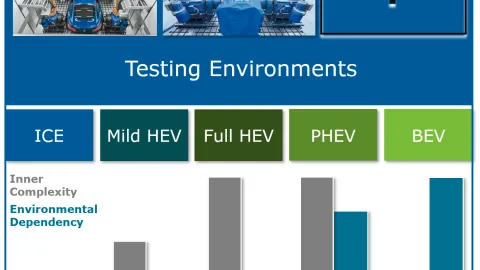
Development of a BEV (Battery Electrical Vehicle) requires significant adaptations of the development process as well as in the development environment. Whereas the testing of physical components as the combustion engine itself was fundamental for the development of conventional vehicles, the testing demands for a BEV are different.The challenge is rather lying in securing the integration of all control units of the vehicle since a BEV is typically equipped with connectivity options besides components for the electrical powertrain itself. The challenge is an opportunity to question and adapt the conventional testing environments like the powertrain testbed where the complete powertrain with the needed control units can be tested before a prototype vehicle is available. The HV System testbed adds more simulation and residual bus capabilities and replaces the dynos with E-Motor Emulator(s) in case needed to run drive cycles. The concept is optimized both in functionality for integration testing as well as in reduction of cost, complexity and building requirements where the testbed is built up. The testbed functions as a physical twin to the simulation environment and acts like a development forum where all development departments have a natural meeting point.The webinar describes the testing challenges of BEV with examples of high-power charging and safety tests and how the HV System testbed meets them and helps achieving higher maturity in earlier phases.
Watch now
Meet our experts who are the presenters of this webinar.
Mats Ivarson, Martin Walcher